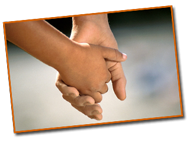I am the decisive element in the classroom. It is my personal approach that created the climate. It is my daily mood that makes the weather. As a teacher, I possess a tremendous power to make a person’s life miserable or joyous. I can be a tool of torture or an instrument. I can humiliate or humor, hurt or heal. In all situations, it is my response that decides whether a crisis will be escalated or de-escalated and a person humanized or de-humanized. ~Haim Ginott
It is everyone’s responsibility to stop and prevent peer abuse (bullying). Families, schools and communities must work together. Educators play a key role in this effort. Extensive research has been and continues to be conducted that has led to best practices for bullying prevention. Included in the best practices is a school wide approach focusing on changing social norms and the school climate. Creating a school climate or bullying prevention committee to oversee efforts is also suggested. It is essential that school administration and staff, as well as parents and community members be educated in bullying intervention and prevention.
Bullying is a societal issue not just a school issue and needs to be actively addressed and prevented everywhere there are people- in the home, workplace, faith-based organizations, civic and community organizations, youth and adult groups/clubs, schools and communities.
In order to effectively prevent bullying we need to examine why people bully in the first place. We at Jeremiah’s Hope for Kindness ascribe to the theory that all behavior is purposeful. Behavior is an attempt to meet a need or needs. Psychologist, William Glasser, proposes that humans have five basic needs.
These needs are:
1. Survival (food, shelter, safety)
2. Love (sense of belonging)
3. Power (competency)
4. Fun
5. Freedom
With this theory in mind the behavior of bullying is an attempt (usually unconsciously) to meet one of these needs in some form or variation. As we know, youth learn their behaviors from those around them and today that circle of influence has grown to include many forms of media from around the world. So, the way in which they see others behaving is the way that they will often behave. The attitudes and social norms that they are exposed to will often become their own. Therefore, as adults we have a significant role in modeling attitudes and behavior that is kind and respectful towards all.
When we are planning our bullying intervention and prevention efforts it is important to keep this information in mind. If we can help kids meet their needs and increase protective factors they are less like to hurt others.
It is not just about having rules and enforcing them. More importantly it is about:
- building a sense of community.
- modeling and teaching respect, kindness, empathy and compassion along with and while teaching the traditional subjects.
- teaching social –emotional skills to increase resiliency and the development of healthy relationships.
- ensuring that every single child feels welcomed, accepted and cared about as he or she is.
- giving every child the tools they need to become healthy, competent and caring adults involved in healthy relationships and able and willing to participate in the betterment of their communities and world.
All of these efforts must be ongoing from the time a child enters the school system to the day they leave it.
The following best practices for bullying prevention in schools may also be a helpful guide.
- Focus on the social climate of the school.
- Assess bullying in the school.
- Obtain staff and parent support and involvement.
- Form group to coordinate efforts.
- Train all staff in bullying prevention.
- Establish and enforce rules about bullying.
- Increase adult supervision in problem areas.
- Consistently intervene and follow through.
- Devote class time to bullying prevention.
- Continue these efforts. (from Stopbullyingworld.org)
In addition to prevention efforts, when bullying does occur a plan that ensures intervention and follow up and follow through is essential. Every effort must be made to ensure that students feel safe to report bullying and feel certain it will be stopped if they do. We will never stop bullying if students are afraid for whatever reason, to report it. For greatest effectiveness, youth must receive the same messages about bullying at home, in the community and at school. To effect lasting change, these efforts must be ongoing.
Schools that have implemented best practices with fidelity and widespread commitment do experience a decrease in bullying over time. I am hopeful that as we continue to learn more about effective bullying prevention and creating safe and caring schools, there will not only be less bullying but also higher academic achievement, less substance abuse, a decrease in other rule breaking behavior and an increased sense of community for all. Ultimately, it is our responsibility to ensure that every child feels valued and cared about unconditionally in their homes, schools and communities.
Teachers can do little to rectify the devastating home lives many children endure; but we can provide another reality when children are in school, creating an environment where they feel safe, accepted, nurtured and respected. In this environment, children can be taught alternatives to the violence that surrounds all of us, helping them perceive hopeful options for their futures.
~ Naomi Drew
Can Kindness Change School Culture?
Contact us at: jeremiahshopefk@gmail.com 🙂
Like us on Facebook at: www.facebook.com/jeremiahshopeforkindness 🙂
Click on the Paypal button below to help us continue our work. 🙂


